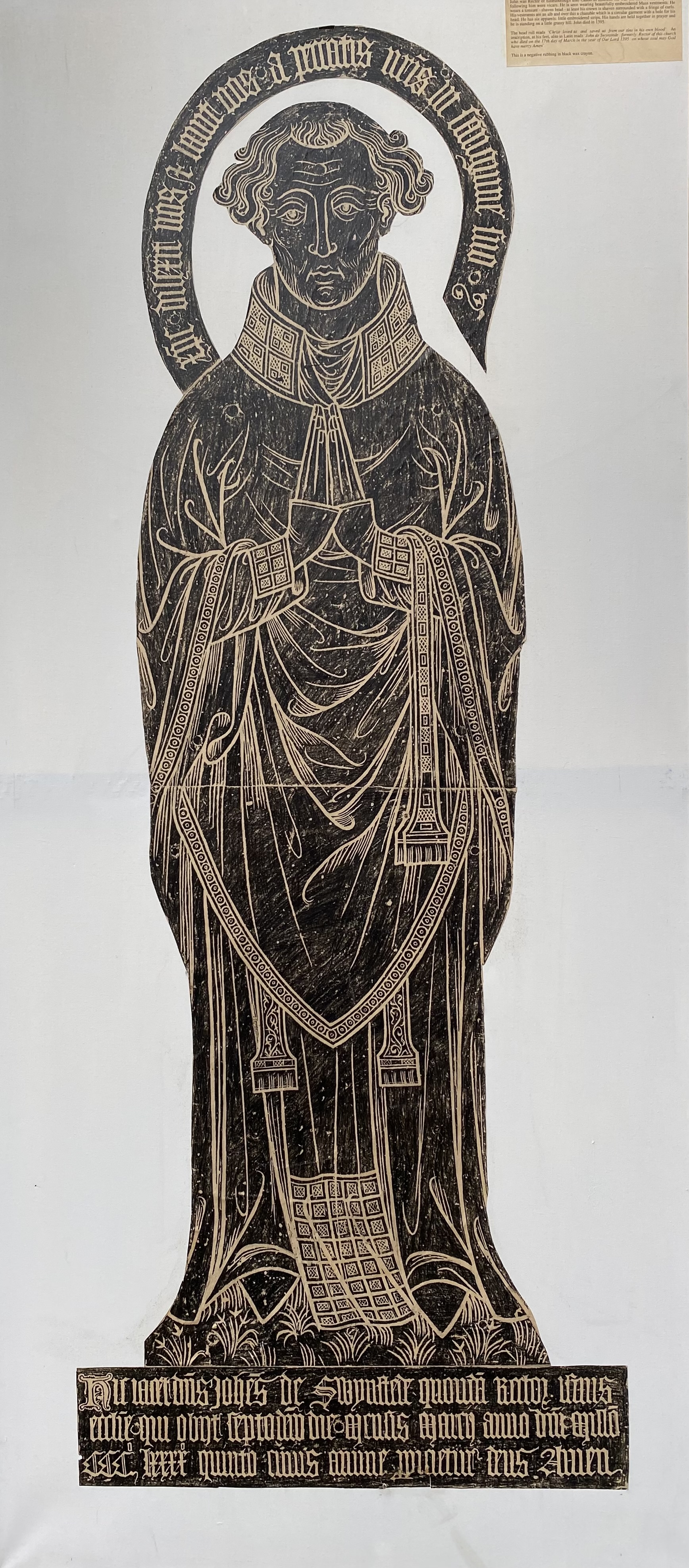John de Swynstede
History
William the Conqueror’s brother, Gilbert of Ghent, was the founder and possessor of the principal manor and estate in Edlesborough. He gave the parish church to the monks of Bardney Abbey, Lincolnshire.
1351 - John de Swynstede was appointed by the Abbot of Bardney and he later also became a Canon of Lincoln.
1385 - The Abbot of Bardney bestowed the advowson of the church to the king (an advowsen is the right to nominate a person to be parish parson, such right usually held by the lord of the manor of the principal manor within the parish. )
1392 - King Richard II bestowed the advowsen to the prior of Charter-House, London.
1395 - John de Swynstede died, buried under or near the altar (presumably), and a memorial brass placed on his grave. Thereafter Vicars were appointed.
(A full list of Rectors and Vicars can be seen on the wall of the church near the lecturn.)
1818 - Brass moved to Pitstone church to enable alterations/ repairs of church.
Then moved to Ashridge, Lord Brownlow’s home. (He held the livings of Edlesborough and Pitstone and was responsible for many of the alterations)
1929 - Brass brought back to Edlesborough and placed in the North Aisle (the original location in the chancel having been tiled during Lord Brownlow’s restoration)
1960s - The then vicar moved the brass to the chancel, see concrete space in floor near altar, to prevent it being damaged by enthusiastic brass rubbings – the chancel and vestry doors could be closed.
1980s CCT removed the brass whilst work carried out. It was later returned and replaced in the north aisle.

The brass rubbing pictures and explanatory text below can be seen in the Tower of Edlesborough Church.
‘John was Rector of Edlesborough, also Canon of Lincoln. He died in 1395.
He wears a tonsure - a shaven head - at least his crown is shaven surrounded with a fringe of curls.
He is wearing beautifully embroidered Mass vestments - an alb and over this a chasuble, which is a circular garment with a hole for his head. He has six apparels: little embroidered strips.
His hands are held together in prayer and he is standing on a little grassy hill.
The head roll reads ‘Christ loved us and saved us from our sins in his own blood’.
An inscription, at his feet, also in Latin, reads ‘John de Swynstede, formerly rector of this church who died on the 17th day of March in the year of Our Lord 1395 on whose soul may God have mercy. Amen’.
There are two copies of the brass rubbing:
A negative rubbing in black wax crayon.
A positive rubbing. The incised lines in the brass have been coloured with Indian ink, the wax crayon has been removed with white spirit and the six apparels plus the lower edge of his chasuble have been painted in colours appropriate for Whit Sunday, ie red and gold.’
These brass rubbings were created by Angela Hillyard, in the 1980s. Angela was a passionate local historian and gave talks to historical groups using her many brass rubbings as references. She died November 2022, and the rubbings were donated to the Church on the Hill by her daughter.
Sources
- 1892 S. ALBANS ARCHITECTURAL & ARCHÆOLOGICAL S0CIET.EDLESBOROIJGH, BUCKINGIIAMSIIIRE. 33. BY F. TREVOR DAVYS, ESQ.
- John de Swynstede 2 brass rubbing texts
